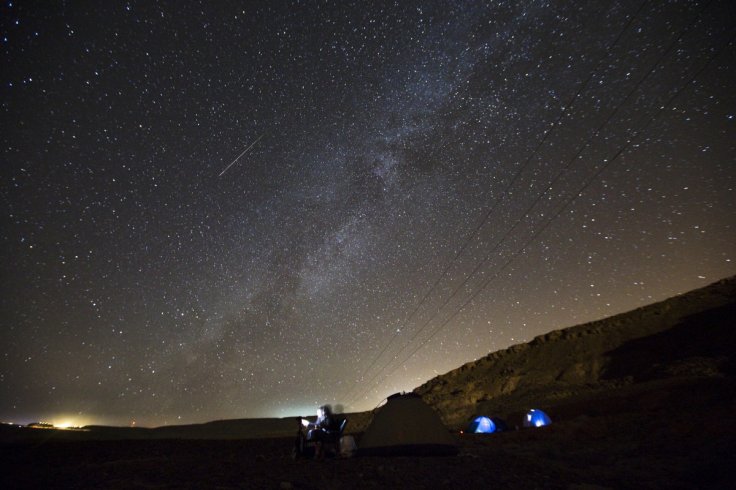The Eta Aquariids meteor shower, which comes from the debris of the famous Halley's Comet, is expected to reach its peak next week. According to expert, at least 20 to 30 meteors per hour will be visible during the shower's peak. The Eta Aquariids meteor shower is an annual cosmic event. This year's event began on April 19 and is expected to continue until May 20.
Debris From Halley's Comet
Eta Aquariids are produced by Halley's Comet, which is officially known as 1P/Halley. This is a short period comet that becomes visible from Earth every 75 to 76 years. It is the only comet of its kind that is visible to the human eye from the planet.

Unlike other meteor showers, the Eta Aquariids are not caused by the tail of debris and dust of Halley's Comet. Instead, the cosmic materials behind the meteor shower have separated from the comets hundreds of years ago. Currently, the orbit followed by Halley's Comet is not close enough to Earth to cause a meteor shower.
The Meteor Shower's Peak
The Eta Aquariids meteor shower began near the peak of another shower known as Lyrids. Although the Eta Aquariids have been pretty active for over a week now, it has not yet reached its peak. As noted by meteor expert Robert Lunsford, the Eta Aquariids shower does not have a specific peak date. Instead, the number of meteors it produces begins to increase during certain dates. For this year, the Eta Aquariids' shower rate will begin to increase starting on the early morning of May 5. During this period, at least 20 meteors per hour can be spotted from Earth, EarthSky reported.
"The strongest activity is usually seen near May 6, when rates can reach 25-30 meteors per hour as seen from the tropical areas of the Earth," Lunsford previously explained through the International Meteor Organization. "Unlike most major annual meteor showers, there is no sharp peak for this shower, but rather a plateau of good rates that last approximately one week centered on May 6."

Spotting The Eta Aquariids Meteor Shower
The peak of the Eta Aquariids this year will coincide with the appearance of a waxing gibbous moon, which is slightly less than the full circle of a full moon. This means that the brightness of the natural satellite might affect the visibility of the meteors.
For this reason, experts are advising stargazers to catch the meteor shower during the days leading up to the start of its peak. Although fewer meteors will be visible during this period, they won't be affected as much by the Moon's brightness.









